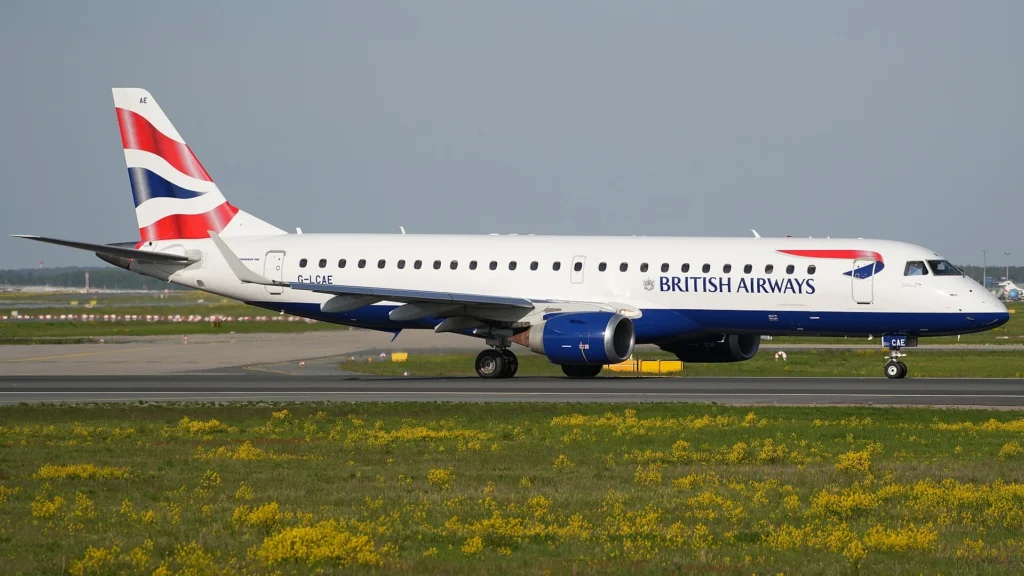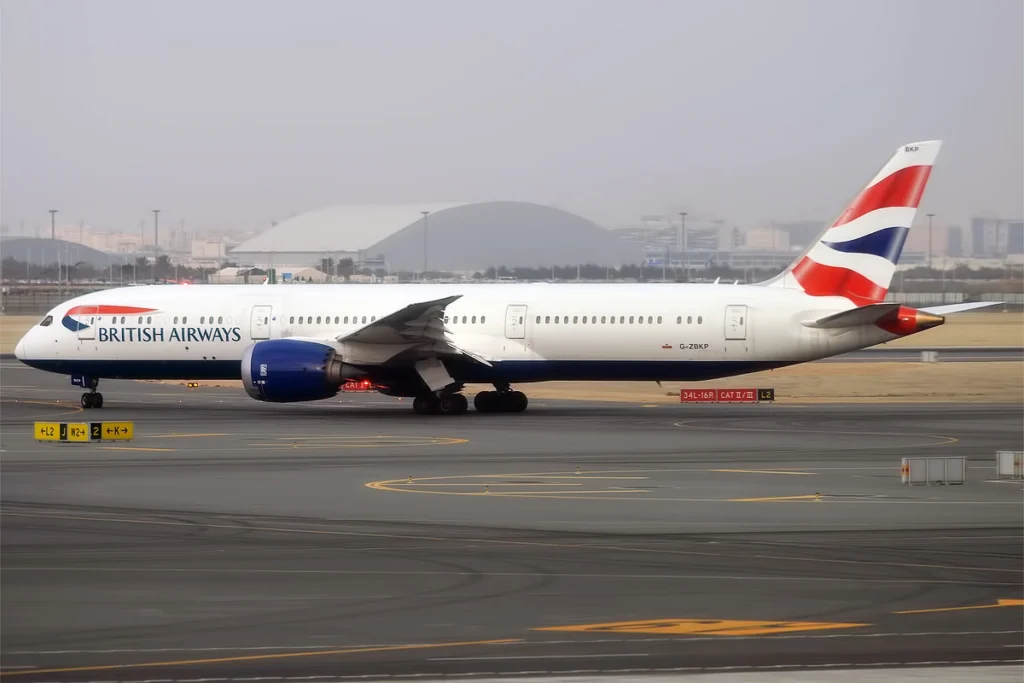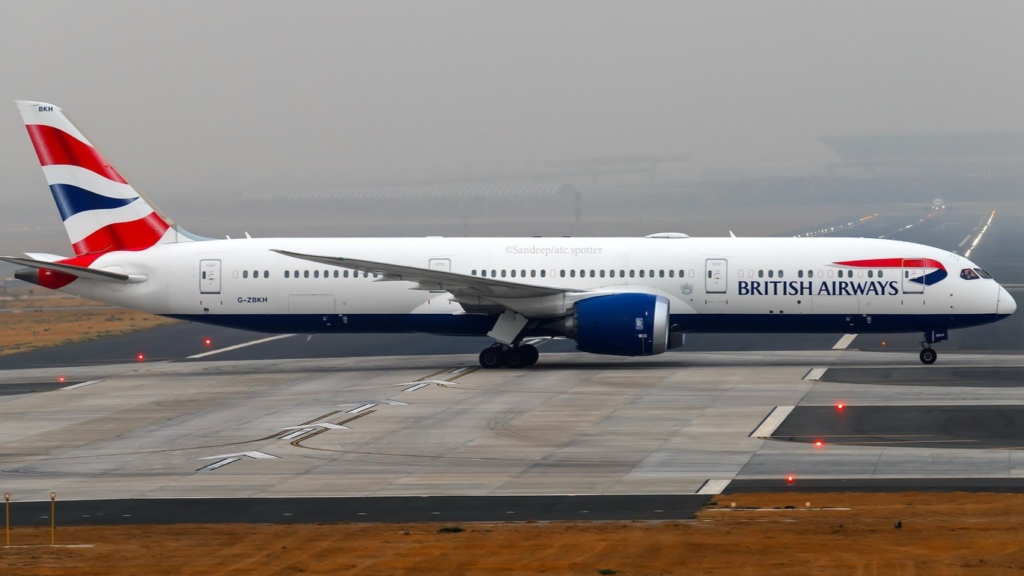
FLORENCE— Twenty passengers were asked to leave a British Airways (BA) flight before departure when high temperatures made the aircraft too heavy for safe take-off.
The Embraer ERJ-190 was scheduled to fly from Amerigo Vespucci Airport, Florence (FLR), to London City Airport (LCY), but extreme heat meant the aircraft required additional fuel, pushing its weight beyond limits for the short runway.
 Photo: By MarcelX42 – Own work, CC BY-SA 4.0, https://commons.wikimedia.org/w/index.php?curid=132883013
Photo: By MarcelX42 – Own work, CC BY-SA 4.0, https://commons.wikimedia.org/w/index.php?curid=132883013British Airways Removes 20 Passengers
The incident took place during a heatwave when temperatures reached 35°C, reducing air density. In aviation, thinner air creates less lift, forcing aircraft to need more power and fuel to take off.
On this occasion, the fuel requirement increased the plane’s weight beyond what the 5,118-foot runway in Florence could handle. For context, London Gatwick’s (LGW) main runway measures 10,859 feet—more than double the length.
British Airways initially asked 36 passengers to volunteer for removal, but only 20 agreed to disembark. Those passengers were later accommodated on alternative flights, with hotel stays and ground transport arranged by the airline.
Pilots regularly check “density altitude,” which combines air temperature, pressure, and humidity to determine aircraft performance.
Higher density altitude reduces lift and engine power, limiting payload capacity. In this case, the combination of extreme heat and Florence’s shorter runway restricted the take-off performance of the ERJ-190.
Similar challenges have been reported by other airlines during Europe’s hot summers. Rapid temperature changes, particularly in Southern Europe, can make smaller airports more vulnerable to operational disruptions.
 Photo- BriYYZ; Wikimedia Commons
Photo- BriYYZ; Wikimedia CommonsOfficial Remarks
A British Airways (BA) spokesperson explained: “Due to the unique nature of the airfield with a short runway, extreme temperatures affect air pressure, so aircraft weight must be reduced. We’re sorry for the inconvenience this caused our customers, and our teams worked hard to get them to their destination as quickly as possible.”
The airline confirmed that affected passengers were rebooked on the next available flights and provided with full care and assistance.
Rising summer temperatures across Europe are raising concerns for airports with shorter runways. Aviation experts note that as climate change intensifies, weight restrictions may become more frequent. This could mean fewer passengers per flight and potentially higher ticket prices to destinations in Spain, Italy, and Greece.
Airports with limited runway lengths, like Florence, are particularly exposed to these challenges, making operational adjustments increasingly necessary during heatwaves.
 Photo: By Anna Zvereva from Tallinn, Estonia – British Airways, G-ZBKP, Boeing 787-9 Dreamliner, CC BY-SA 2.0, https://commons.wikimedia.org/w/index.php?curid=78121351
Photo: By Anna Zvereva from Tallinn, Estonia – British Airways, G-ZBKP, Boeing 787-9 Dreamliner, CC BY-SA 2.0, https://commons.wikimedia.org/w/index.php?curid=78121351Similar Incident
British Airways (BA) passengers endured extreme heat onboard a Boeing 787-9 Dreamliner after a malfunction left the aircraft without air conditioning (AC) during a prolonged tarmac delay.
The incident occurred on Flight BA104 from Dubai International Airport (DXB) to London Heathrow (LHR), leaving travelers in stifling conditions before departure.
The Auxiliary Power Unit (APU) failure prevented cabin cooling, forcing the aircraft to return to a remote area for maintenance. Passengers described temperatures reaching 47°C (116.6°F), with minimal water and limited service from flight attendants.
Extreme Heat Incident on British Airways Flight BA104
On May 24, Flight BA104 was scheduled to depart Dubai (DXB) for a seven-hour journey to London Heathrow (LHR). After boarding the Boeing 787-9 Dreamliner, passengers immediately noticed rising temperatures in the cabin due to an APU malfunction.
The APU is critical for providing power and air conditioning while the aircraft is on the ground, and a failure can leave passengers exposed to extreme heat.
Normally, ground power units can substitute for a malfunctioning APU, and cabin cooling resumes once the engines start. In this case, however, the aircraft began taxiing but stopped after a cockpit warning light was triggered. With the gate now occupied, the plane was redirected to a remote cargo area, stranding passengers in intense heat for two hours.
Passengers reported extreme discomfort. Jacqueline Stringer, a passenger with high blood pressure, described the cabin temperature reaching 47°C (116.6°F).
Children were reduced to wearing only diapers, and flight attendants struggled to provide sufficient water or assistance, highlighting the challenges of managing onboard heat emergencies.
 Photo: Sandeep/ atc spotter
Photo: Sandeep/ atc spotterTechnical Background and Safety Implications
The APU is a small engine located at the rear of an aircraft, responsible for supplying electrical power and enabling air conditioning when the main engines are off. While APU failures are not uncommon, extended exposure to high temperatures can pose serious health risks, including heat exhaustion, dehydration, and fainting.
Ground delays exacerbated the situation. Standard protocols prioritize engine start and use of ground equipment to maintain cabin comfort. In this incident, operational constraints—such as the aircraft’s temporary relocation to a remote area—limited the crew’s ability to restore safe conditions promptly.
Aviation experts emphasize that passenger well-being should always take precedence. While airlines face pressures to maintain schedules, this case illustrates the need for strict adherence to safety procedures during technical failures, particularly when extreme environmental conditions are involved.
Passenger Response and Airline Communication
Passengers voiced their distress on social media and dedicated complaints forums. Reactions ranged from sympathy to criticism of the airline’s handling of the situation. Some highlighted the lack of water distribution, the heat’s physical impact, and the emotional strain of waiting in the confined cabin.
British Airways confirmed the technical issue and stated that the aircraft returned to the stand for maintenance before resuming its journey. The airline thanked customers for their patience but did not provide information about compensation or a formal apology. The incident underscores the delicate balance between operational efficiency and passenger safety in modern aviation.
Stay tuned with us. Further, follow us on social media for the latest updates.
Join us on Telegram Group for the Latest Aviation Updates. Subsequently, follow us on Google News
British Airways Passengers Trapped in Plane for 7 Hours at London Heathrow Airport
The post British Airways Removes 20 Passengers from Flight at This Italian Airport appeared first on Aviation A2Z.






